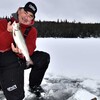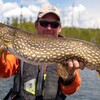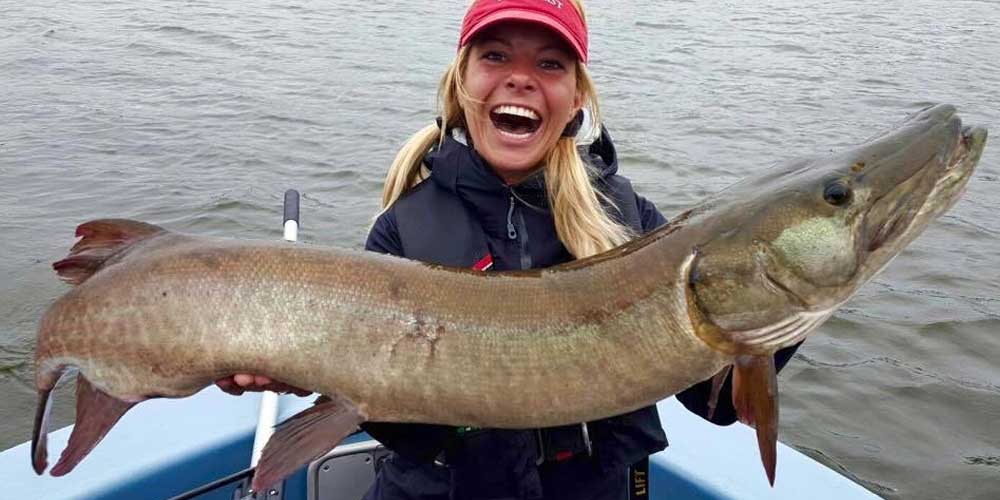
5 Keys To Canadian Muskies
Muskies have been known as the fish of 10,000 casts, an elusive predator fish with legend and lore. Stories of six-foot-long muskies exist. Let me just be clear that this is all lies. Sure, muskies may be the most difficult freshwater fish to catch, but like any other species, you can catch them consistently. There’s no way that I could film my television show, The Musky Hunter, if the fish were that hard to catch.
My mission has always been to educate anglers on how to catch muskies and safely release them, and to dispel the many myths about this fish. Musky fishing is an incredible experience, and Ontario is home to many of the best musky waters in the world. Whether you are planning on fishing every day of your vacation for muskies or just want to dabble in musky fishing for a few hours, you need a game plan to be successful. Here are my five keys to help you catch more muskies anywhere you chase them throughout Ontario.
Easy Pieces
Most likely, wherever your adventures take you throughout Ontario, you’ll be able to get a map of potential musky hot spots from either a friend or lodge owner. Just remember that what you don't know about those spots is the conditions when the muskies are most likely to feed there. For example, it could be that the muskies on a particular spot only bite in a west wind, or when it’s sunny. So just because you have a marked map doesn’t mean you will catch them there. Use the map as a guideline to understand the types of spots muskies will use on that water. Likewise, don’t burn lots of gas running from spot to spot on a marked map when you may be passing by great-looking spots.
My best advice is to break up large Ontario waters into easy pieces or fishable sections. Try and learn as many spots as possible in those sections, and these large waters become more manageable. Plus, you save a lot of money on fuel. The more spots you learn in a given section, the more muskies you will catch. It’s just better to spend more time fishing and less time driving between spots.
Focus on fishing in smaller spots. As a general rule, you want to fish spots that take you 15-20 minutes to fish. Check out smaller islands where you can fish around the entire thing. When fishing larger islands, just focus on a point or a small bay. Stay away from large bays or huge areas that may take too long to fish. Any time you see a marker buoy, most likely it’s a good musky spot. It could be a reef or a shallow point. Regardless, fish it. Ultimately, you are trying to fish a bunch of spots and figure out the types of areas holding muskies. Once you figure that out, it’s simply a matter of replicating that same scenario, and Ontario waters frequently have nearby spots that look the same and will hold muskies.
Evening Assaults
If you are on a trip and your sole focus is muskies, you naturally are going to fish all day for them. Just make sure you save your energy for the evening, particularly in the summer. If you are on an Ontario trip and want to do a little musky fishing during the week, don’t make a cast until after dinner! Radio tracking studies of muskies have shown that they are most active in the evening. So to increase your odds, make sure to fish evenings

Musky fishing is definitely not a 9 to 5 job. After all, you aren’t fishing for walleye or bass; this apex predator is most active in the evening. You’ll be amazed at how many musky encounters you may have from 6 pm until dark. Of course, it’s fun to fish during the day, and if it’s cloudy and warm, most likely the muskies will be feeding throughout the day. However, on those sunny days, you can bank on an evening bite. If you spot a big musky during the day, make sure to return to the spot in the evening. In fact, if it’s a giant musky, be sure to make it the last spot you fish in the evening, as that’s most likely the time you will catch it.
Powerfish
Although I probably have over 300 musky lures in my boat at any one time, you don’t need to bring that many to be successful. Since the muskies are typically located around shallow cover, your best strategy is to fish fast, covering lots of spots, trying to catch an active musky. Use the simple approach that the more spots you fish, the more likely you are to encounter a big musky.
I always have someone casting an in-line spinner, such as a Cowgirl or Junior Cowgirl. These large bucktails with either #10 or #9 blades are the best. You only need a few colours, and my favourites are nickel blades with a black skirt, nickel blades with a blue/silver skirt, orange blades with a black skirt, and chartreuse blades with a chartreuse skirt. Those four colours will catch them anywhere in Ontario.
Topwater lures are also essential in Ontario. Someone should always be fishing a TopRaider or a side-to-side topwater such as a WalkinRaider. Have the angler in the front of the boat use the in-line spinner and follow up with the topwater lure. Also, if you are returning in the evening, fishing a TopRaider in dark is extremely effective. I have lots of photos of friends holding big muskies in the dark that were caught on Topwater.

Big minnowbaits such as a 9” ShallowRaider is also a must in Ontario. I use these big lures with a pull-pause retrieve, bounce them off rocks, and rip them around the weedy cover. The concept of letting these big lures that have lots of flashes make cover collisions, creating havoc, is a surefire way to either get a musky to strike or follow.
The other lure I always bring along is a Magnum Bulldawg. This big soft plastic lure is basically a big rubber jig that you swim above the cover using long rips with pauses. The big tails on this lure make it look alive. I don’t typically start the day fishing this lure, but any time I get a musky to follow I cast the Bulldawg back towards the musky and slowly swim the bait back to the boat. Plus, if you are returning to a big musky in the evening, this is a lure some should cast back at the musky.
Figure 8
I catch at least 30 percent of the muskies I catch every year at the boat side, executing a figure 8 pattern with the lures. In fact, at our University of Esox schools, we teach on Lake of the Woods every year, and some 60 percent of the muskies are caught on figure 8. So, if you are not executing figure 8, you might miss half of the muskies you could catch on a trip!

To execute figure 8, simply keep the same amount of line you need for your next cast between your rod tip and the lure. For me, that’s about 18 inches. As the lure reaches the boat, move it in a large figure 8 pattern, making big turns or circles, the larger the better. Make the movements smooth and fluid, and you can catch them. Just be sure and practice this every cast. That way, it becomes second nature. There’s a big difference between executing a figure 8 with nothing behind it and looking down and seeing a 50-inch giant musky with its nose right behind the bait. Practice makes perfect in this case. You might still be nervous, but you might just trigger the biggest fish of your life to bite!
Release Them Right
Ontario is the home to more trophy muskies than any place in the world. The muskies frequently live to 25 years of age. Plus, there is little artificial stocking that occurs, so the waters rely on natural reproduction. Muskies are a renewable resource in the sense that if you catch them and handle and release them properly, they can continue to grow and be caught by other anglers. In addition, many Ontario waters have a 54-inch size limit; so realistically, more than 95 percent of all muskies caught in those waters will have to be released. Every year, I see photographs and hear stories of anglers who have caught the same musky years later. If you are going to chase muskies, you need to be prepared to catch and release them.

It’s important to have a large net to land a musky, and when you do get them, you leave the bag of the net and the musky in the water. The net actually serves as an in-water live pen, while you unhook the musky. Do not pull the fish from the water and let it bounce all over the boat while trying to unhook the fish. To unhook the musky, you’ll need a pair of 12-inch nose pliers and a pair of hook cutters. You need to keep some distance between your hand and the hook, and cutting the hook is often easier than anything else to remove the hook from the musky’s mouth. I like to handle the musky with a glove, as it keeps my hands from getting cut by the musky gillrakers.
Before you lift the musky from the net, make sure that your partner knows how to work your camera and that you have a game plan. When ready, lift the musky from the water, support the musky and hold it horizontally, take a couple of quick photos, and place it back in the water. Hold the musky by the tail, and be sure to take a photograph of releasing the musky. You’ll feel the musky gain strength, and when it wants to go, let it swim away.
Musky fishing in Ontario is nothing short of spectacular; understanding these five keys can increase your odds significantly and ensure that when you do catch one that someone else may enjoy that same experience.
Recommended Articles

10 Facts About Lake of the Woods

Eating Northern Pike

Crawford’s Diamond in the Rough

Predicting Lake Thickness

Lakers of Lower Manitou: Fishing Just North of the U.S. Border

Top 5 Baits for Smallmouth and Largemouth Bass

World Class Carp

Don't Forget The Umbrella

The Tigers of Sunset Country

Piecing Together the Muskie Puzzle
Indian Lake Lodge
Troutfly Lake Outpost
Top 5 Musky Destinations in Ontario
Ontario Brook Trout

HIdden Bay Lodge

Magical Montreal River Bass

Casting for Coasters

In Search of Brookies

Beaded Lures













